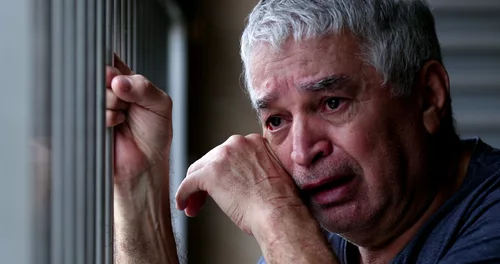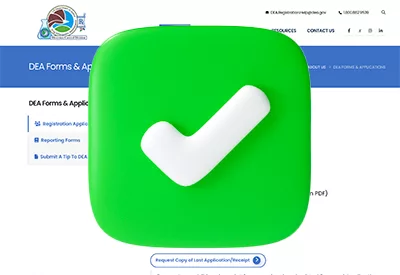Complexities of Elder Abuse

CGPR: What are the different types of elder abuse?
Dr. Santos: Elder abuse can take the forms of neglect or abandonment, physical abuse, sexual abuse, psychological abuse, or financial exploitation (Hoover RM and Polson M, Am Fam Physician 2014;89(6):453–460). While some forms of abuse may leave visible marks or evidence, others, like financial exploitation and psychological abuse, are more subtle and require a closer examination of changes over time. For example, withdrawing from family and friends can be a sign of control and manipulation. Elder abuse affects about one in six older adults worldwide (Yon Y et al, Lancet Glob Health 2017;5(2):e147–e156).
CGPR: Which patients are at higher risk of elder abuse?
Dr. Santos: The “young old”—those more likely to live with a spouse or adult children—along with older women, those living in shared living environments, individuals with lower income, and those experiencing poor social support or isolation are at a higher risk of elder abuse (Lachs MS and Pillemer KA, N Engl J Med 2015;373(20):1947–1956). Additionally, older adults living in institutional settings are at high risk for abuse, with over 60% of staff members admitting to elder abuse in the past year (Yon Y et al, Eur J Public Health 2019;29(1):58–67).
CGPR: How can psychiatrists distinguish between behavioral changes due to elder abuse and those stemming from mental health conditions common in later life?
Dr. Santos: When considering problems affecting older adults, you need to think about timing and history. While there are DSM diagnoses that are always correlated with time, distinguishing changes due to elder abuse from other mental health conditions requires a focus on recent events. Psychotic behaviors may be attributed to nuanced cognitive impairment, and paranoia could be a response to actual threats. Many people simply attribute unusual behavior to a person’s inherent nature or dementia. However, unlike long-standing depression or cyclical disorders like bipolar disorder, elder abuse often involves new occurrences such as the entrance of new people into the older adult’s life or financial loss.
CGPR: What role do cultural factors play in the recognition of elder abuse?
Dr. Santos: Understanding someone’s cultural background is vital when trying to differentiate between behavioral changes caused by elder abuse and those resulting from mental health conditions common in later life. Misinterpretations can arise when cultural norms are not taken into account. For example, we encountered a family where it was culturally normal to communicate loudly with each other. This practice, combined with the older adults’ hearing loss, made their conversations seem even louder and more aggressive to outsiders. Without understanding the context, such interactions could easily be misinterpreted as abuse. Similarly, in some patriarchal cultures, it is common for an adult son to make decisions on behalf of older family members, even if it means withholding a diagnosis. The line between cultural practice and abuse becomes clear when behaviors result in physical, emotional, or psychological harm; neglect; or exploitation of the older adult. The key is to assess the impact of the behavior on the individual’s well-being. When cultural practices infringe on an older adult’s rights, autonomy, or safety—such as withholding a diagnosis without informed consent—they may cross into the territory of abuse, breaching ethical boundaries even if intended as protective.
CGPR: What are you looking for during the visit when you suspect elder abuse?
Dr. Santos: Be alert: Look for signs of disheveled appearance or other indications that something may be wrong. When patients are accompanied by caregivers, make sure that the patient’s voice is heard. Relying solely on collateral informants, such as family members or aides, can be ageist and may prevent your patient from sharing their own history. Even if the patient has dementia, spend some time alone with them to assess their mood and ask relevant questions. When bringing in the informant, observe their interaction with the patient. Look for physical changes, such as the patient shrinking back or becoming quiet. Pay attention to clues like patients wringing their hands or not trusting their own judgment. If something feels off, get collateral information, as the person with the patient may not be their trusted individual. Additionally, educate families on what to look for, as they may not be familiar with the signs of abuse or exploitation.
CGPR: How do you talk to family members about what to look for?
Dr. Santos: I try to frame the conversation in a way that empowers them to protect their loved one without causing undue alarm. I usually say something like, “It’s really important to keep an eye on any physical changes or shifts in behavior. If you notice unexplained bruises, especially in areas like the face, inner arms, or back, or if your loved one seems more withdrawn or anxious than usual, these could be signs that something’s not right. Sometimes these signs are easy to overlook, so don’t hesitate to reach out if anything feels off. It’s always better to check in if you’re unsure.”
CGPR: Can you speak more about physical findings that make you concerned about elder abuse?
Dr. Santos: The location of any injuries or bruises can help tell you whether the person fell or if they were held and pushed (Rosen T et al, Ann Emerg Med 2020;76(3):266–276). For example, when we see bruising on the face, lateral aspect of the right arm, or the posterior torso, it raises red flags for potential abuse (Wigelsworth A et al, J Am Geriatr Soc 2009;57(7):1191–1196). Understanding the stages of healing can also provide valuable information. As a trusted individual, you may be the only one the person confides in, so it’s important to listen and believe your patient’s experiences. While some injuries may be the result of frail skin and accidental bumps, the presence of fingerprints or other signs of physical force is not normal and may indicate abuse.
CGPR: If you notice concerning physical marks, how do you broach the subject with the patient in a way that will make them want to talk to you about it?
Dr. Santos: I approach the conversation with the patient in a gentle and nonthreatening manner. I start by expressing general concern for their well-being, saying something like, “I noticed some marks on your arm, and I just want to make sure you’re okay. How have you been feeling lately?” This opens up the conversation without immediately implying anything negative, which can help the patient feel more comfortable. Next, I ask open-ended questions to give them space to explain in their own words, such as, “Can you tell me a bit more about how these marks happened?”
CGPR: Can you tell us about detecting financial exploitation?
Dr. Santos: Financial exploitation, like other forms of elder abuse, can be subtle and gradual, making it difficult to detect. Unlike physical abuse, which often leaves signs such as bruises or hospital visits, financial exploitation is more covert. While anyone can fall victim to external scams, such as phishing emails and phone scams, most financial abuse is perpetrated by people the victim knows, like family members or caregivers. These trusted individuals may misuse funds, withhold money, or coerce the older adult into financial decisions against their will. For instance, a child or caregiver with access to an older adult’s bank account may make purchases for themselves rather than using the funds to support the older adult’s needs, such as clothing, food, or medical care. Detecting this type of abuse requires attention to changes in financial behavior, like unusual withdrawals, unpaid bills, or sudden amendments to legal documents like powers of attorney. Observe patterns and ask questions if you suspect financial exploitation to prevent further harm.
CGPR: How might you discuss scams and other types of financial exploitation with patients?
Dr. Santos: When discussing scams, I might say something like, “These days, we’re seeing a lot of people being targeted by scammers, especially through emails and phone calls. They can be very convincing, and it’s easy to get caught off guard. Have you noticed anything unusual with your finances or received any calls or messages that seemed suspicious?” For family-related exploitation, I approach with sensitivity, saying, “Sometimes, those we trust with finances may make decisions that don’t align with our best interests. Has anything like that happened to you?” This opens the door to identifying potential issues without making the patient feel judged or defensive.
CGPR: How can clinicians intervene?
Dr. Santos: Communication with family members is key. Educate them about the warning signs of financial exploitation and encourage open dialogue. Teach patients to always verify any urgent financial requests independently by contacting the supposed requester directly. Future planning is essential. Help your patients establish healthcare proxies and powers of attorney with trusted individuals, and document these decisions in their medical records. This ensures their wishes are respected and helps prevent exploitation. You can also involve social workers, financial advisors, or elder abuse specialists when you suspect exploitation.
CGPR: Any tips for documentation if we suspect elder abuse?
Dr. Santos: If you are documenting bruises or suspicion of abuse, and the patient’s abuser has proxy access or is looking in the chart, then your patient could be in trouble and may never see you again. You should still document carefully, just be careful about who can access your patient’s chart—always ask and verify who has access to their records. You may have to block your note. If you can, take pictures to document any suspicious injuries. Also think about the stages of healing; if you have suspicions, then consult with your patient’s PCP and request X-rays if necessary. It’s also important to write the names of the people you are talking to, not just ‘the daughter.’ By specifying the name, you can track who received important information and use it for restitution and justice.
CGPR: At what point do you consider reporting abuse?
Dr. Santos: Reporting suspected abuse is a serious step, and you should consider it when there is reasonable evidence that abuse is occurring or when there is significant concern for the patient’s safety. If you’ve observed physical signs of abuse, like suspicious bruises or injuries, especially if these are coupled with behavioral changes in the patient, consider reporting. Additionally, if the patient confides in you about being mistreated, or if family members or caregivers express concern, take their concerns seriously. Before making a report, I usually try to have a candid conversation with the patient—if it’s safe to do so—to understand their perspective and ensure that I’m not misinterpreting cultural norms or personal relationships. However, if there is any immediate danger to the patient or if the situation seems to be escalating, I err on the side of caution and report the abuse. It’s better to act to protect the patient than to wait and risk further harm.
CGPR: Tell us about working with individuals at risk for abuse due to cognitive impairment.
Dr. Santos: To build a trusting relationship, we need to be mindful of our tone, avoiding judgmental or prescriptive attitudes. By building trust, patients will feel comfortable sharing their concerns with us. In addition, we need to have conversations about the patient’s goals, control, and what healthy aging means to them. We should emphasize our role in protecting their rights and wishes. However, when discussing vulnerability to abuse and exploitation, patients may become defensive and believe that their rights are being taken away. To overcome this, we can frame the conversation around empowering them to make choices and emphasize that everyone needs help at times. You could say, “My job isn’t to take away your control but to help you make decisions that protect your well-being.” By approaching the conversation this way, and by identifying people they trust, we can assist them in making decisions while they still have the capacity to do so. Additionally, when patients make unfounded accusations, such as claiming family theft, it helps to acknowledge their feelings with a simple “I understand why you’re concerned.” This approach maintains trust and supports their sense of control.
CGPR: Are there agencies that can detect abuse or help protect older adults?
Dr. Santos: Collaborating with local agencies that offer home visits can be helpful in ensuring a healthy environment. EMS workers can also play a role in identifying potential abuse by checking the patient’s living conditions, such as the state of their cupboards and fridge. Medication dates can provide clues about the patient’s medical history. In care facilities, just being vigilant and regularly checking on residents can help protect them from abuse.
CGPR: How can we educate people about the risks of elder abuse and encourage them to be more aware of their surroundings and neighbors?
Dr. Santos: You can educate patients about elder abuse by informing them about common scams, such as unscrupulous contractors charging exorbitant fees for unnecessary repairs. You can also address the issue of romance scams, where lonely individuals are targeted for emotional manipulation and financial exploitation. However, it’s also important to address the fact that abuse often occurs within families, where relatives may misuse finances or fail to provide adequate care despite having access to resources. Reach out to those who may be more vulnerable and lonelier, offering support and acting as a sounding board. Encourage patients to have open conversations about their financial arrangements and caregiving needs, and to stay mindful of family dynamics. Support family members in setting healthy boundaries and promoting respectful caregiving. Additionally, encourage patients to join groups and platforms that facilitate regular communication among older adults, as it provides a sense of connection and support. However, keep in mind that these platforms can be exploited by individuals.
CGPR: How can clinicians use technology to monitor and address elder abuse?
Dr. Santos: There’s potential for clinicians to use information from wearable technology, such as monitoring heart rate, together with education and support services to help identify situations of discomfort or to track violence (Conti A et al, Int J Environ Res Public Health 2022;19(4):2357). Clinicians and staff could use this information to create behavioral care plans and ensure that patients are comfortable with their caregivers.
CGPR: What are the most effective clinician interventions to reduce elder abuse?
Dr. Santos: Consider using the Elder Abuse Suspicion Index (https://tinyurl.com/4fnu9v8v) in patients with risk factors for abuse. There’s little evidence on effective interventions, but expert recommendations include making sure to discuss your concerns privately, assess your patient’s capacity to make decisions, consider referrals to social service agencies, and report your suspicions as a mandated reporter (Wang XM et al, CMAJ 2015;187(8):575–581).
CGPR: Thank you for your time, Dr. Santos.
 Elizabeth (EJ) Santos, MD, MPH
Elizabeth (EJ) Santos, MD, MPH 

_-The-Breakthrough-Antipsychotic-That-Could-Change-Everything.webp?t=1729528747)



